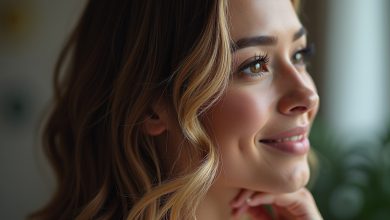
Men vs. Women: The Different Approaches to Hair Loss Treatment
Introduction
Hair loss affects millions of people around the world, transcending age and gender. However, the approaches to treatment can differ significantly between men and women. Understanding these differences can help individuals choose the right path for their hair restoration journey. In this article, we will explore how men and women tackle hair loss, the treatments available, and the psychological implications of each approach.
Understanding Hair Loss
Before diving into treatment options, it’s essential to understand the causes of hair loss. For both men and women, genetics play a significant role. However, hormonal factors, lifestyle, and health conditions can also contribute to hair thinning and baldness.
Common Causes
- Genetics: A family history of hair loss can increase the likelihood of experiencing it.
- Hormonal Changes: Conditions such as pregnancy, menopause, and thyroid disorders can affect hair health.
- Stress: Physical or emotional stress can lead to temporary hair loss.
- Health Conditions: Issues like alopecia areata and scalp infections can lead to hair loss.
Men’s Approach to Hair Loss Treatment
Men typically experience hair loss due to androgenetic alopecia, also known as male pattern baldness. This condition often begins in the late teens to early twenties and progresses with age.
Popular Treatment Options
- Minoxidil: An over-the-counter topical treatment that promotes hair growth.
- Finasteride: A prescription medication that reduces the hormone responsible for hair loss.
- Hair Transplant Surgery: A surgical procedure that involves moving hair follicles from one part of the body to the balding area.
- Laser Therapy: Non-invasive treatments that use light to stimulate hair follicles.
Women’s Approach to Hair Loss Treatment
Women experience hair loss differently than men, often characterized by thinning rather than bald spots. Female pattern hair loss often occurs after menopause and can be emotionally distressing.
Popular Treatment Options
- Minoxidil: Just like in men, this topical treatment is commonly used and approved for women.
- Hormone Therapy: Adjustments in hormone levels can sometimes help with hair restoration.
- Platelet-Rich Plasma (PRP) Therapy: A treatment that uses the patient’s own blood to stimulate hair growth.
- Wigs and Hairpieces: Many women opt for cosmetic solutions to conceal hair loss.
Psychological Impact of Hair Loss
For both men and women, hair loss can lead to feelings of self-consciousness and decreased self-esteem. However, the societal perceptions of hair loss differ by gender. Men may feel pressure to embrace baldness as a sign of maturity, while women often face stigma associated with hair loss.
Support and Coping Strategies
- Seek Professional Help: Talking to a psychologist or counselor can help address emotional challenges.
- Join Support Groups: Sharing experiences with others can provide comfort and understanding.
- Focus on Self-Care: Engage in activities that boost self-esteem, such as exercise or new hobbies.
Conclusion
Hair loss is a common issue for both men and women, yet the approaches to treatment can vary widely. Understanding these differences can empower individuals to make informed decisions about their hair restoration options. Whether one opts for medical treatments, surgical solutions, or cosmetic alternatives, acknowledging the emotional aspects of hair loss is equally important. By addressing both the physical and psychological components, individuals can find a path that best suits their needs.




